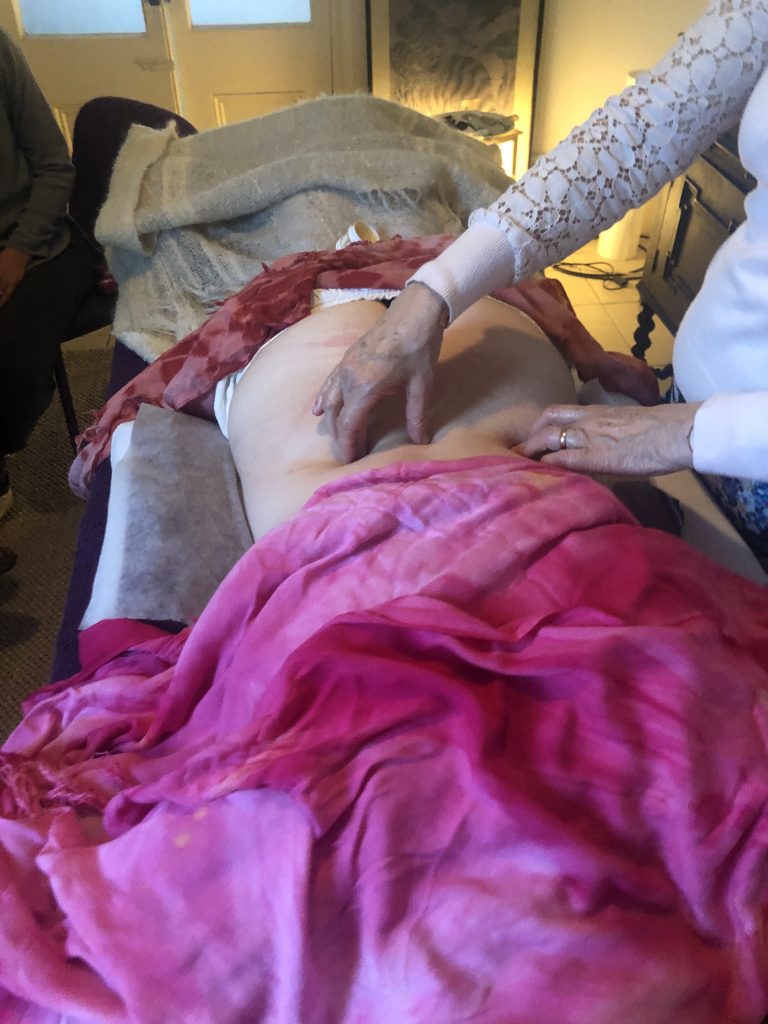Living Ligaments I specific
Diagnosis – what is it and do we need it?
Pelvic anatomy – check out the ligaments first
Scars and setting up for this work

Checking for LLI
Checking for sacral breaks
Checking for O.S.L.
We are in the middle of the session to be doing these moves – and after these.
REMINDER – MUST do the classifications of moves – not one fixer (as these are) to the next . .
Check on responses as the person is likely to need clearing/soothing/settling
We MAY eventually do the Ovarian Suspensory Ligament correction – but we need to set them up to won . .
As an example of what to do prior to this class . . . Hippy Shake (CLICK)
Back moves . .
Fascia
Ligaments – see pelvic anatomy
Sacrum
Coccyx
Taking leg for a walk
Scars
Keloding
Ovarian Whirlpool – CHECKER/eventually a correcter [FIXER].
- What it is A deepened attack at 90 degrees to sort out all that is blocking circulation in and out of the ovaries.
- For men this can be an immensely revitalising experience as often the left side (where the testicle started) is all congested – try not to mess with ‘tubes’ if you find any.
- Origin? – Dr Jennifer Mercier
- Why it is – so little exercise and actual deep work happens in this regions – and so many are sedentary and not allowing lymph to flow naturally – seat belt injuries, tight clothes, seated most of the day
- What to expect (what are you liberating)?
- How to do it – Acc to Dr Mercier – Once you feel that you’ve sufficiently warmed the tissue than you’ll need to find the ovaries. Once the ovaries are palpable massage each of them separately in a clockwise motion 10 times each side.
Work deeply. The goal of the work here is to ” re-awaken” the blood flow to each ovary. Also, when
you’re working the ovary itself you’re influencing the suspensory and utero-ovarian ligaments to loosen
their tensions. Use circular sweeping motion to influence the relaxation of your client and also to help
remove excess lymph that may have collected. - What it may feel like – under your hands/fingers.
- When to use. As with all here – in sequence – initially to assess – gently – how much ‘give; you have then go in a lot deeper . .and get stuck in – only after the other tools- steaming/moxa sacral fan/lots of back and belly/lymph have been achieved.
- When not to use – If painful = or you are in doubt
What to do to set it up to win: – use as checker – do a tiny bit at the beginning – to set your ‘goalposts’.
As you go through the layers, in time – they will feel how much you are moving.
Always do a ’round and round’ after and a settle.
Uterine Rake – CHECKER/eventually FIXER
- What it is – A very deep raking move that allows the body to find what it got used to.
- Origin? – Dr Jennifer Mercier
- Why it is – “With each raking movement you are shortening the utero-sacral ligament to enable a lessening in tension and restriction”.
- What to expect (what are you liberating)? Thus is very deep and shifts almost anything – you must be slow and start shallower than you intend to end up.
- How to do it – “Find the uterus. Start with your finger tips in the center of the pubic bone and pull superiorly off into the lower pelvis. You’ll be able to access the top of the uterus. Place your fingers back on the pubic bone and continually “rake” the uterus deeply and slowly 15 times. This is a very deep manipulation and can be uncomfortable for many women so go supremely slowly. If your client’s bladder seems full than have her go empty so she is more comfortable”.
- What it may feel like – under your hands/fingers. Often you can’t get it it is so tight, full of fibroid or whatever.
- When to use – always – as a checker – to see how you are going
- When not to use – I would still use when pregnant- judicially – not a beginner’s experience – I have used it in end stage prostate cancer and along with all else we we doing – he lost the cancer.
- What to do to set it up to win – everything is done first – like prostate drainage – this is almost at the end.
